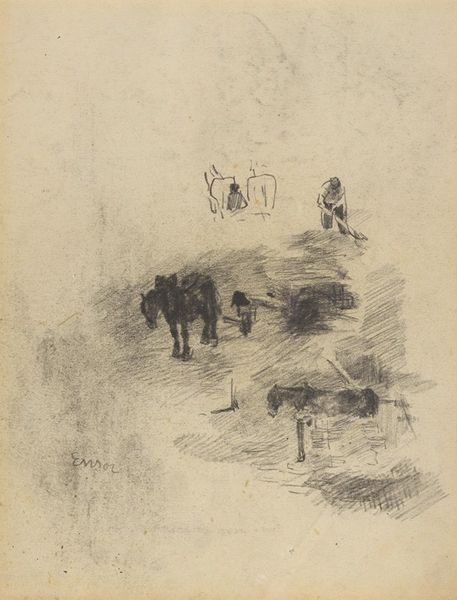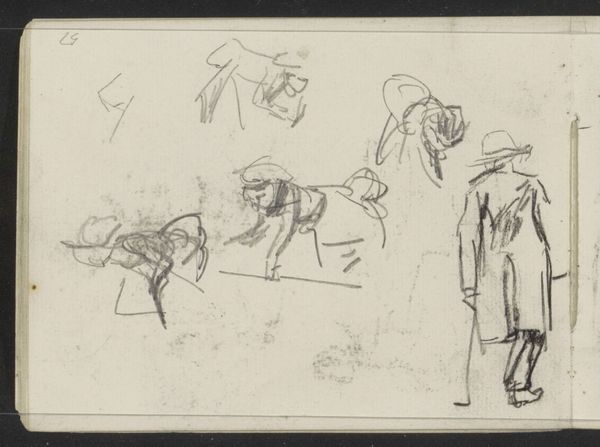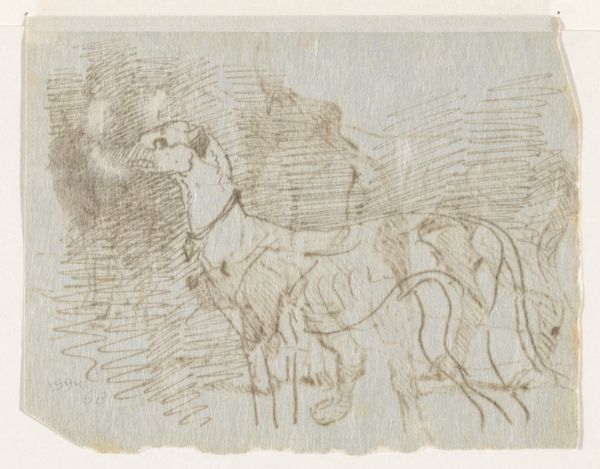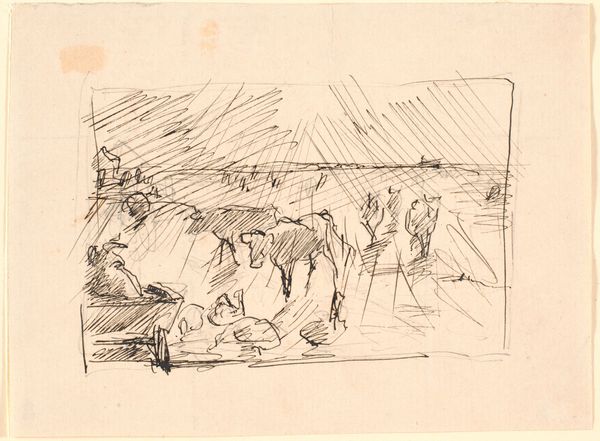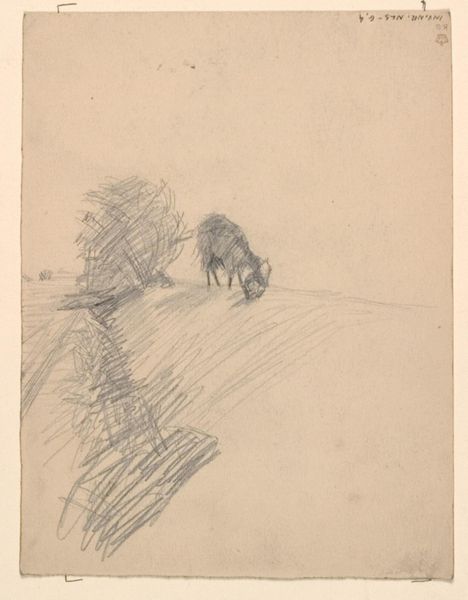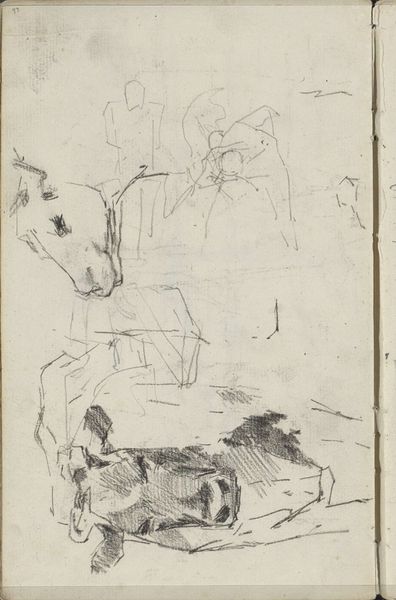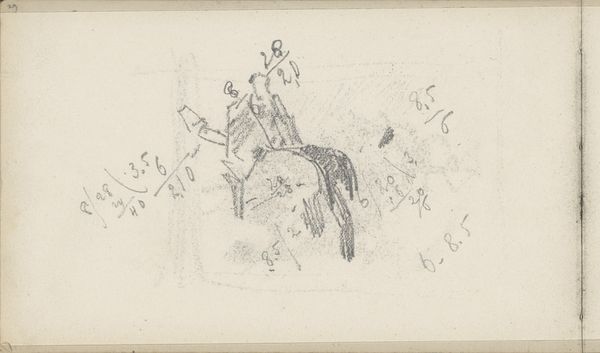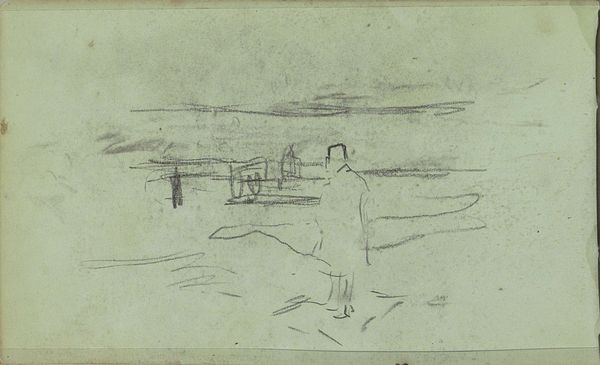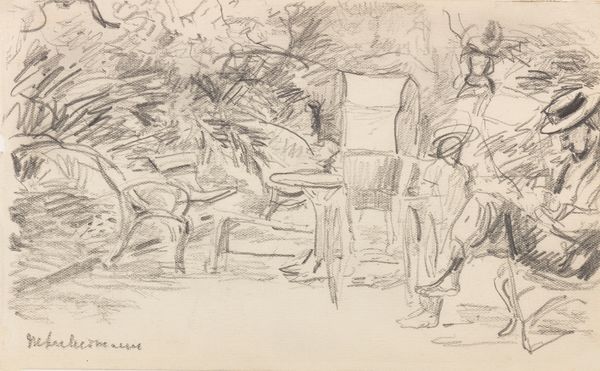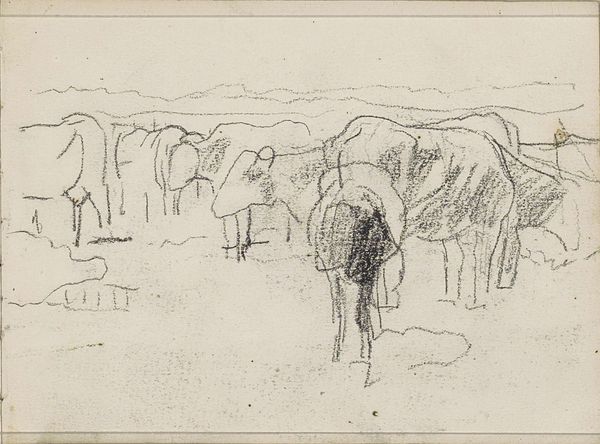
Schets van een landweg met een boer en koeienkoppen 1867 - 1923
0:00
0:00
georgehendrikbreitner
Rijksmuseum
Dimensions: height 120 mm, width 195 mm
Copyright: Rijks Museum: Open Domain
Editor: This is a drawing by George Hendrik Breitner called "Schets van een landweg met een boer en koeienkoppen", which translates to "Sketch of a country road with a farmer and cow heads". It was made sometime between 1867 and 1923. It's a fairly light pencil work on paper. What catches my eye is its intimate and casual quality – like a page torn from an artist’s personal sketchbook. How do you interpret this sketch? Curator: For me, the seemingly simple sketch carries echoes of agrarian life and its symbolic weight in Dutch culture. These cow heads, isolated, almost become emblems of fertility and prosperity – archetypes. The lone farmer on the road, framed by the receding perspective, appears as a custodian of this heritage. Do you feel a sense of nostalgia embedded within these images, or is it something else? Editor: I see the nostalgia, now that you mention it. It makes me think of simpler times and the importance of farming. But the sketchiness also gives it a modern, almost fleeting feeling. Curator: Exactly. It is not a photograph of a real thing. Breitner isn't just depicting a scene; he's capturing a feeling, a mood connected to our cultural memory of the countryside. This work reminds me how symbols aren’t fixed; their meanings shift with time and individual experience, much like memories themselves. I think his signature grounds this work and gives it additional weight. Editor: That’s a great point about symbols shifting. I didn't think about the cow heads as being more than just… cows. Thanks for pointing out how personal memory gets tangled with cultural symbols, especially for art created for future consumption. Curator: It makes one ponder about other familiar images which once stood for something far greater in times gone by, yet, linger to have new meanings for us.
Comments
No comments
Be the first to comment and join the conversation on the ultimate creative platform.
